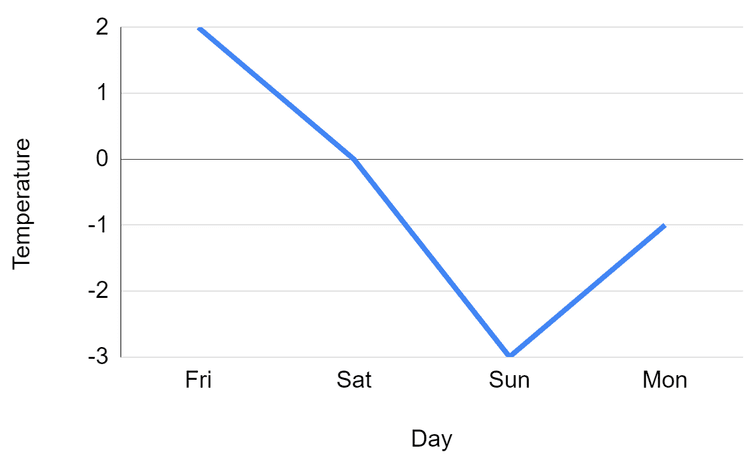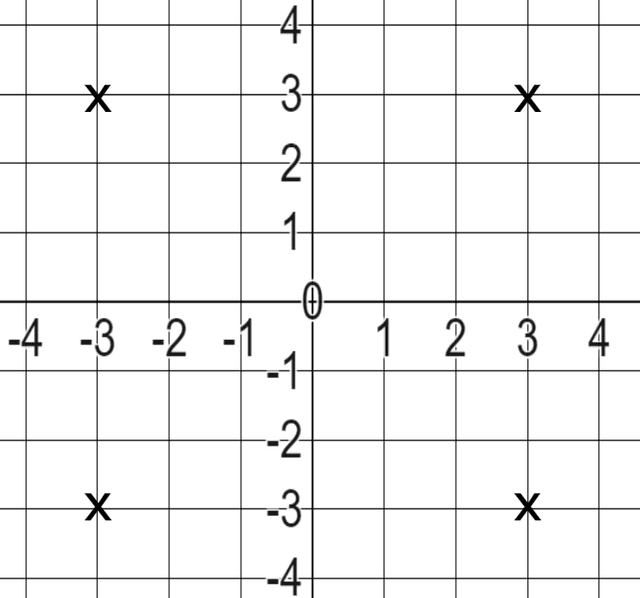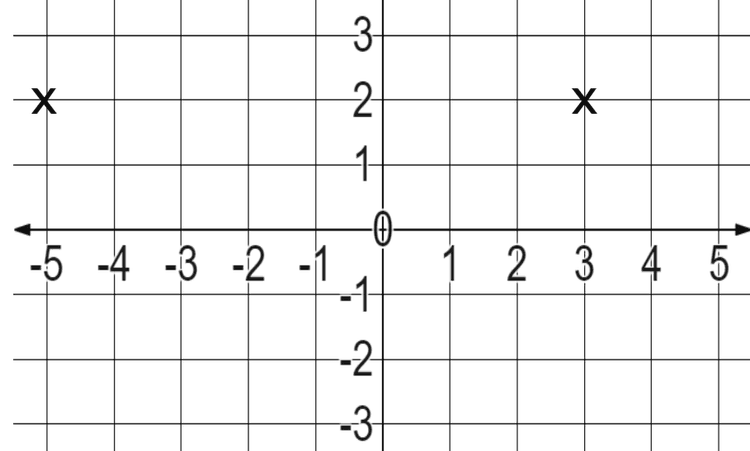Myths about teaching can hold you back
- Year 5
Solve problems involving positive and negative numbers in a range of contexts
I can solve problems involving positive and negative numbers in a range of contexts.
- Year 5
Solve problems involving positive and negative numbers in a range of contexts
I can solve problems involving positive and negative numbers in a range of contexts.
These resources were made for remote use during the pandemic, not classroom teaching.
Switch to our new teaching resources now - designed by teachers and leading subject experts, and tested in classrooms.
Lesson details
Key learning points
- Scales on graphs and coordinate grids are the same as number lines.
- Number lines model bridging through zero.
Keywords
Difference - The result of subtracting one number from another.
Coordinates - A set of values that show an exact position.
Common misconception
Pupils can come unstuck by misreading or misunderstanding the information being presented.
Encourage pupils to consider what information they do know, and plot this on an empty number line, to help work out the unknown information.
To help you plan your year 5 maths lesson on: Solve problems involving positive and negative numbers in a range of contexts, download all teaching resources for free and adapt to suit your pupils' needs...
To help you plan your year 5 maths lesson on: Solve problems involving positive and negative numbers in a range of contexts, download all teaching resources for free and adapt to suit your pupils' needs.
The starter quiz will activate and check your pupils' prior knowledge, with versions available both with and without answers in PDF format.
We use learning cycles to break down learning into key concepts or ideas linked to the learning outcome. Each learning cycle features explanations with checks for understanding and practice tasks with feedback. All of this is found in our slide decks, ready for you to download and edit. The practice tasks are also available as printable worksheets and some lessons have additional materials with extra material you might need for teaching the lesson.
The assessment exit quiz will test your pupils' understanding of the key learning points.
Our video is a tool for planning, showing how other teachers might teach the lesson, offering helpful tips, modelled explanations and inspiration for your own delivery in the classroom. Plus, you can set it as homework or revision for pupils and keep their learning on track by sharing an online pupil version of this lesson.
Explore more key stage 2 maths lessons from the Negative numbers unit, dive into the full primary maths curriculum, or learn more about lesson planning.

Licence
Prior knowledge starter quiz
6 Questions
Q1.Match the feature of the coordinate grid with the correct definition.
the line on the coordinate grid that runs horizontally
where the X axis and Y axis cross, usually written as zero
the line on the coordinate grid that runs vertically
Q2.Tick all of the pairs of values that have a difference of 10.
Q3.What is the difference between −10 and 5?
Q4.What is the difference between −10 and −2?
Q5.The temperature in the morning is −3℃. It increases by 5℃. What is the new temperature? ℃
Q6.This graph shows the changes in temperature over several days in ℃. Tick all the statements that are true.

Assessment exit quiz
6 Questions
Q1.The temperature inside the cabin is 18℃. The temperature outside the cabin is −12℃. What is the difference between the inside and outside temperatures? ℃
Q2.The temperature was −13℃ at night. Then it increased to 5℃ in the day. What was the change in temperature? ℃
Q3.The air temperature outside the plane is −25℃. It is 45℃ warmer inside. What is the temperature inside the plane? ℃
Q4.It is 40℃ warmer inside the plane than outside. What could the inside and outside temperatures be?
Q5.The vertices of a square have coordinates (3,3), (−3,3), (−3,−3) and (3,−3). Which of the coordinates below would appear outside the square?

Q6.A pair of coordinates have values of (3,2) and (3,−5). Imagine they are joined to make a line, which is extended beyond the coordinates. Tick all of the coordinates that would appear on the line.



